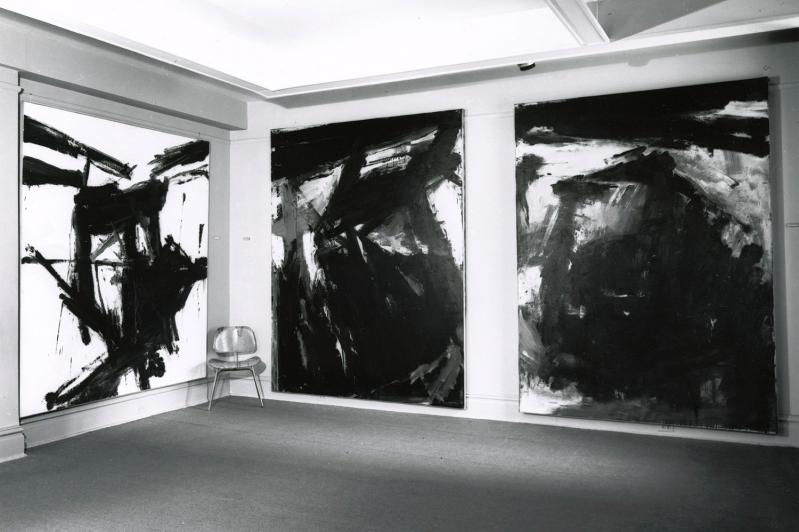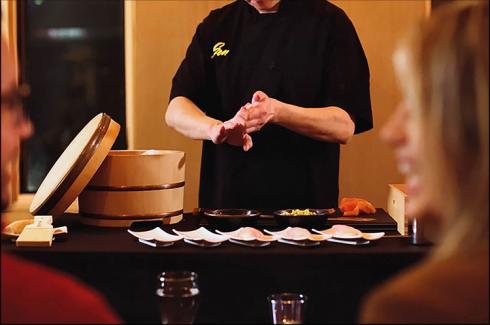Franz Kline, an Abstract Expressionist painter who burned brightly and died too soon, has received the scholarly attention required for a catalogue raisonne of his later works 60 years after his death. Hauser & Wirth Institute recently announced its digital version of the effort, "Franz Kline Paintings, 1950-1962," years that encompass the mature to later period of his career, which ended with his death in 1962.
The documentation, directed by Robert S. Mattison, a Kline scholar, covers a period that had not received this kind of thorough vetting. It amounts to an important resource for researchers and scholars who want a more comprehensive understanding of the artist's final years.
Dr. Mattison, a professor of art history at Lafayette College in Easton, Pa., not far from the artist's birthplace, said in a release that "Kline is one of the essential figures of midcentury American art, however, his work has not been studied on the level of his peers."
Hauser & Wirth Institute noted that the "seeming spontaneity of his paintings and association with action painters in the New York School bely the complex nature of his process, which often involved preliminary studies and subtle revisions in the paintings themselves."
This resource not only lists Kline's 256 known paintings from this period, it also shares their exhibition and publication history and provenance. This history includes exhibitions at the Venice Biennale, Germany's Documenta, and several Whitney annual and biennial exhibitions of contemporary artists of the time. The information is available online for anyone interested in Kline, from the merely curious to serious academics.
The period is marked by the artist's characteristic and dynamic black-and-white paintings. Although he is well known, his reputation was built on repeated showings of a small number of works. Dr. Mattison said this would be a chance to remedy that neglect.
"Kline's work will undoubtedly disseminate to a much wider audience through this publication," Lisa Darms, the executive director of Hauser & Wirth Institute, said. "Thanks to its digital format, it serves as a living document where adjustments and additions can be made as Kline research continues to develop."
Although Kline never became an official full or part-time resident of East Hampton, he regularly painted here, including at the home and studio of John Little in Springs, now the Art Center at Duck Creek. He was also great friends and well-documented drinking buddies with Willem de Kooning both here and in the city.
Hauser & Wirth Institute said the catalog offers new opportunities in scholarship related to Kline and his role in the history of midcentury art.
The artist was born in Wilkes-Barre, in the coal region of Pennsylvania, an area he would continue to reference, from his early somewhat realist paintings to the later non-objective work done in his Greenwich Village studio. In his early New York years, Kline would sell his work in Washington Square Park. The lack of official documentation of those pieces foreshadowed a similar cavalier attitude toward the distribution of his later work, despite the acclaim he had received by then.
As part of the project, Hauser & Wirth Institute funded the digitization of Elisabeth Zogbaum's collection of biographical material and papers related to Kline in the Archives of American Art at the Smithsonian Institution. Zogbaum was a close friend and the executrix of his estate. The records include "correspondence, exhibition files, photographs, artifacts, audio interviews," and his own books, according to the institute. This has allowed unrestricted access to these documents through the archives' website, opening further avenues for research.
Hauser & Wirth Institute, a private nonprofit foundation tied to the Hauser & Wirth international network of galleries, was formed to increase access to archives through grants for projects and education. It also has public programs focused on artistic legacies. At the time of its founding in 2018, Iwan Wirth, the president and a co-founder of Hauser & Wirth, said the institute's work "is a natural extension of our gallery's support of living artists and the noteworthy estates and foundations we have represented for over 25 years."
The aim was to support growth in art historical research to match the dramatic growth in exhibition and publishing projects in the art world.




